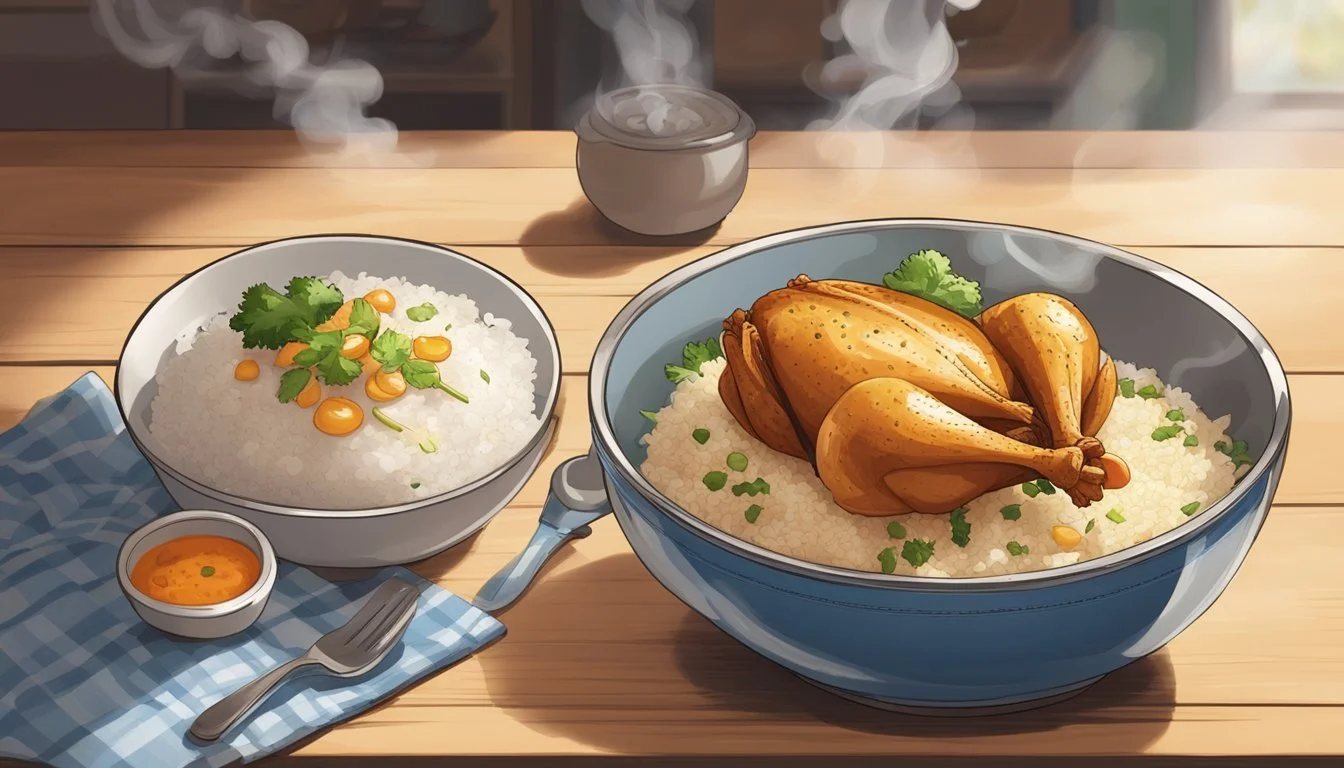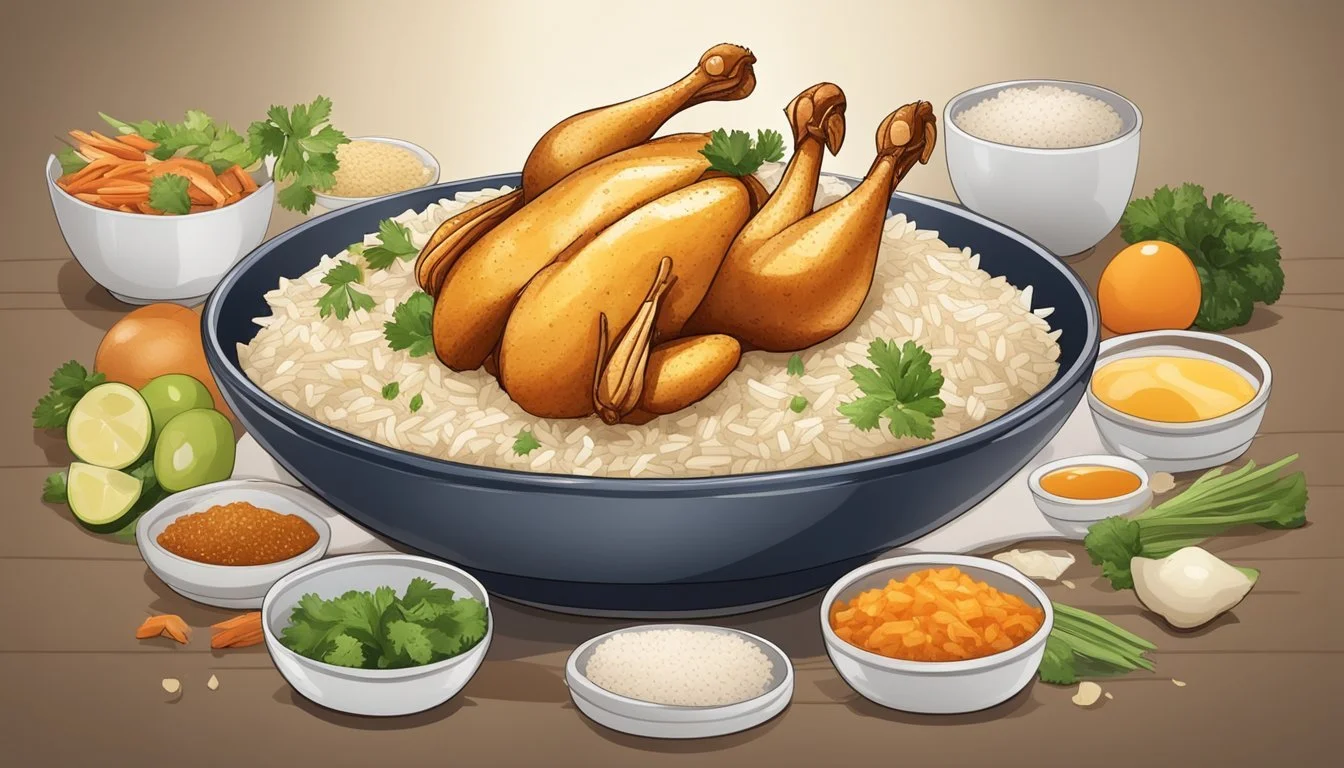How Long Do Chicken and Rice Bowls Last?
Expert Storage Tips
Chicken and rice bowls are a delicious and nutritious option for meal prep enthusiasts looking for easy-to-make lunches or dinners. When stored properly, these meal prep bowls can last in the refrigerator for up to four days, making them a convenient choice for those with busy schedules. This storage timeframe ensures that the ingredients remain fresh and safe to eat.
For anyone interested in maximizing their meal prep efforts, knowing how long chicken and rice bowls can last is crucial. By following safe storage practices, which include using airtight containers and keeping them refrigerated, individuals can enjoy their prepped meals throughout the week without sacrificing flavor or quality.
Meal prepping chicken and rice bowls not only saves time but also provides a balanced meal option packed with protein and essential nutrients. With various recipes available, from Mediterranean to Mexican-inspired bowls, it's possible to keep meal times exciting while maintaining a healthy diet.
Ingredients and Nutrition Profile
Chicken and rice bowls feature a blend of high-quality proteins, carbohydrates, and essential nutrients. Each ingredient plays a crucial role in balancing flavor, texture, and nutritional value.
Exploring the Key Ingredients
Chicken:
Chicken serves as the primary protein source in these bowls. Boneless, skinless chicken breasts or thighs are common choices for their lean profile and high protein content.
Rice:
White, brown, or wild rice can be used depending on dietary preferences. Rice provides the essential carbohydrates needed for energy.
These bowls often include corn, black beans, bell peppers, and onions, adding fiber, vitamins, and minerals.
Seasonings and Sauces:
Ingredients like salsa, soy sauce, garlic, and spices elevate the dish with extra flavor without adding unnecessary calories.
Nutritional Benefits and Considerations
Protein:
A standard serving of chicken provides about 25-30 grams of protein. This aids in muscle repair and growth.
Carbohydrates:
Rice contributes around 45 grams of carbohydrates per cup, offering long-lasting energy. Brown rice has added benefits of extra fiber.
Fats:
The fat content is minimal if lean chicken is used. However, be mindful of added saturations from sauces.
Cholesterol and Sugar:
Chicken can contain dietary cholesterol, but choosing lean cuts helps manage intake. Sugar content is usually low unless sweet sauces are added.
Fiber and Vitamins:
Vegetables in the bowls enhance fiber, vitamin C, potassium, and other vital nutrients, making the dish more balanced.
Using a variety of ingredients not only enhances taste but also supports a well-rounded diet.
Cooking Methods and Techniques
Proper preparation of chicken and rice bowls ensures both safety and flavor. Key considerations include the cooking methods and techniques for both the rice and chicken, focusing on retaining moisture and enhancing taste.
Best Practices for Cooking Rice
Cooking rice properly is crucial for consistency and texture. White rice can be prepared on the stovetop, in a rice cooker, or using an Instant Pot.
For stovetop preparation, rinse the rice to remove excess starch. Use a ratio of 1 cup of rice to 2 cups of water. Bring to a boil, then simmer covered for about 18 minutes.
In a rice cooker, follow the device's guidelines, usually involving a 1:1.5 ratio of rice to water. The cooker will turn off automatically when the rice is done.
Instant Pots provide a quick and efficient method. Use a 1:1 ratio, set on high pressure for 4-8 minutes depending on the brand and model.
Perfecting Chicken for Bowls
The choice of chicken breasts or chicken thighs affects the bowl's taste and texture. Thighs are juicier but breasts are leaner.
Roasting chicken in the oven requires a temperature of 400°F. Marinate and bake for 20 minutes for breasts, or 30-35 minutes for thighs.
Grilling is another excellent option. Preheat the grill to medium-high and cook each side for 5-7 minutes.
Using a slow cooker or Instant Pot allows the chicken to absorb flavors. For slow cooking, cook on low for 4-6 hours. For Instant Pot, cook on high pressure for 8-10 minutes.
Ensure the chicken reaches an internal temperature of 165°F to guarantee it is safely cooked.
Storage Guidelines
Proper storage of chicken and rice bowls ensures they remain safe to eat and taste great. The key elements to consider include using airtight containers and adhering to correct refrigeration and freezing procedures.
Refrigeration and Freezing Procedures
Chicken and rice bowls should be cooled quickly and stored in airtight containers. This prevents cross-contamination and keeps the food fresh. Leftovers can last up to four days in the refrigerator if kept at 40°F (4°C) or below.
For longer storage, freezing is an excellent option. Place cooled chicken and rice in airtight containers or heavy-duty freezer bags. Label with the date and use within three to four months for the best quality. Always thaw frozen meals in the refrigerator or microwave, never at room temperature, to minimize the risk of bacteria growth.
Maximizing Freshness and Flavor
To maintain the best taste and texture, avoid reheating chicken and rice bowls multiple times. Instead, portion out what you need.
Store in shallow, airtight containers to cool down quickly and stay fresh longer. Adding a splash of water before reheating can help rice stay moist. Use the microwave or stovetop to heat until the food reaches an internal temperature of 165°F (74°C).
For microwave reheating, stir the contents midway to ensure even heating. This method helps maintain both safety and flavor for your chicken and rice bowls.
Customization and Variations
Chicken and rice bowls are versatile and can be tailored to suit various dietary needs and personal preferences.
Adapting to Dietary Restrictions
For those on low-carb diets, substituting cauliflower rice for traditional rice can be an excellent option. Cauliflower rice reduces the carbohydrate content while adding valuable dietary fiber.
Individuals looking for gluten-free options can ensure all ingredients, especially sauces and marinades, are free from gluten. Brown rice and quinoa are fantastic alternatives for traditional rice, providing additional nutrients and fiber.
Vegan adaptations can be achieved by replacing chicken with plant-based proteins such as tofu or chickpeas. These swaps maintain the dish's protein content while catering to a plant-based diet.
Creative Twists on Classic Bowls
Adding a fresh twist to standard chicken and rice bowls can keep meals exciting. Buffalo chicken rice bowls introduce a spicy kick with tangy buffalo sauce. Pairing this with creamy avocado balances the heat and adds healthy fats.
Using rotisserie chicken is another convenient option, bringing a depth of flavor to the dish without extra cooking time.
Incorporating a variety of vegetables, such as roasted peppers or steamed broccoli, enhances the nutritional value and visual appeal.
To infuse a Mediterranean flair, marinate the chicken in lemon, garlic, and herbs, and serve with a mix of olives, tomatoes, and a dollop of hummus.
Meal Prepping and Planning
Effective meal prepping and planning involve strategies that save time and maximize the nutritional value of meals. Key aspects include efficient assembly techniques and proper portioning and packaging.
Efficient Assembly Techniques
To quickly and efficiently assemble chicken and rice meal prep bowls, preparation is crucial. Begin by cooking large batches of rice and chicken. Utilize tools like an Instant Pot for speedy cooking.
Steam or roast vegetables such as broccoli or green beans while preparing the protein and grains.
Create a dedicated workspace with all ingredients and tools ready. This organization minimizes movement and maximizes efficiency.
Consider cooking multiple recipes simultaneously or back-to-back to save time. For instance, while rice cooks, the chicken can be baked or grilled. Using pre-cooked or frozen veggies can also reduce assembly time.
Portioning and Packaging
Proper portioning ensures balanced meals with the right macros. A standard serving might include 1/2 cup of cooked rice, 1/2 cup of cooked chicken, and 1/2 cup of vegetables. Adjust portions based on dietary needs or specific goals.
Using sealable containers helps maintain freshness. Glass containers are excellent for reheating, while BPA-free plastic ones are more portable. Clearly label each container with the content and date to track freshness.
Stacking containers in the fridge neatly can also optimize space and make it easier to grab and go. Properly packed, chicken and rice bowls can last up to 4 days when refrigerated.
Serving Suggestions and Accompaniments
Enhancing chicken and rice bowls with diverse toppings and pairings can elevate the meal's flavor and nutritional balance. Specific choices like herbs, fresh vegetables, and additional proteins offer customizable options for various tastes and dietary needs.
Toppings and Add-Ons for Enhanced Flavor
A variety of toppings can transform a basic chicken and rice bowl into a more flavorful and enjoyable dish.
Fresh herbs such as cilantro, green onion, and parsley add a refreshing taste. Vegetables like tomatoes, bell peppers, and cabbage bring both color and crunch.
Incorporating cheese options—like feta or blue cheese crumbles—adds creaminess and depth. Hot sauce or buffalo sauce can provide a spicy kick, while lemon juice or a touch of sesame oil introduces zest and richness.
For those who enjoy a bit of crispiness, topping the bowl with crispy chickpeas or fried onions can add a delightful texture.
Pairings for a Balanced Meal
Complementary side dishes can turn a chicken and rice bowl into a more complete meal.
Adding black beans or chickpeas boosts protein and fiber content. A Caprese salad with tomatoes, mozzarella, and basil offers lightness and a contrasting cold, fresh flavor.
Roasted or steamed vegetables like carrots, corn, and green beans can be served alongside the bowl for additional nutrients. For a creamy element, a dollop of sour cream or Greek yogurt works well.
Another option includes using a portion of fresh cabbage or lettuce to create a salad base. Drizzling some olive oil, salt, and pepper on it enhances the flavor without overpowering the main dish. Grilled or sautéed veggies such as red onion and bell pepper also make excellent accompaniments.
Health and Safety Considerations
When preparing and storing chicken and rice bowls, ensuring food safety is paramount. This involves paying close attention to both contamination prevention and maintaining safe cooking temperatures.
Preventing Contamination
Cross-contamination is a significant concern when handling chicken and rice bowls. It's essential to separate raw chicken from other ingredients to avoid the spread of harmful bacteria.
Use separate cutting boards and utensils for raw chicken and other ingredients.
Washing hands thoroughly with soap and water before and after handling raw chicken can reduce the risk of contamination.
Storing chicken and rice bowls in airtight containers prevents bacteria from entering and multiplying.
Ensuring that leftover bowls are cooled and stored in the refrigerator within two hours minimizes the potential for bacterial growth. Labels with dates help track freshness and avoid consumption past the recommended storage period.
Understanding Safe Cooking Temperatures
Cooked chicken must reach an internal temperature of 165°F (74°C) to ensure harmful bacteria such as Salmonella and E. coli are eliminated.
Using a food thermometer to check the internal temperature is a reliable method.
When reheating chicken and rice bowls, they should be heated to at least 165°F (74°C) as well.
Avoid reheating leftovers more than once, as repeated cooling and heating cycles can encourage bacterial growth.
If chicken and rice bowls are frozen, ensure they are thoroughly defrosted and then reheated to the safe temperature to maintain food safety standards.







